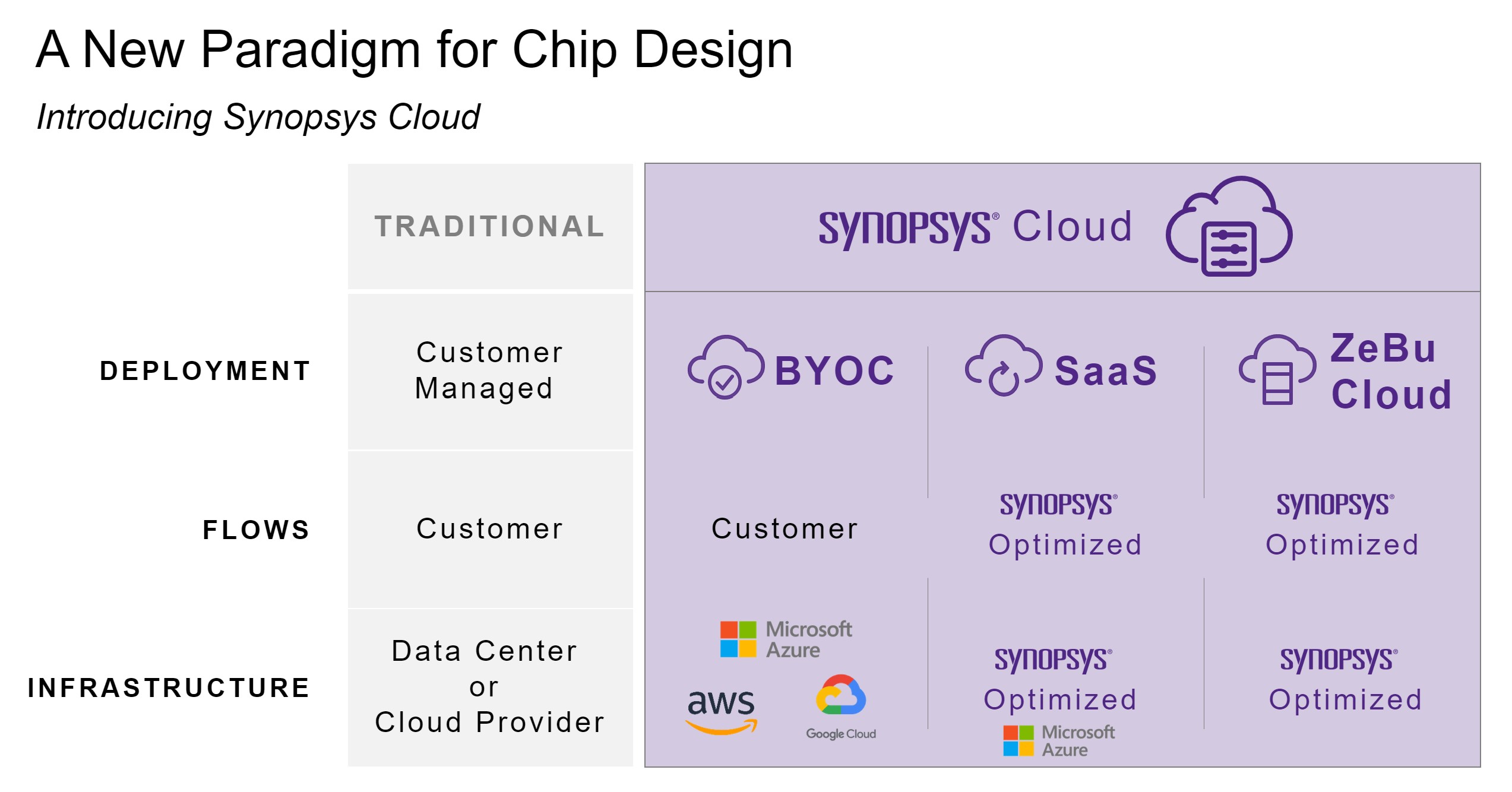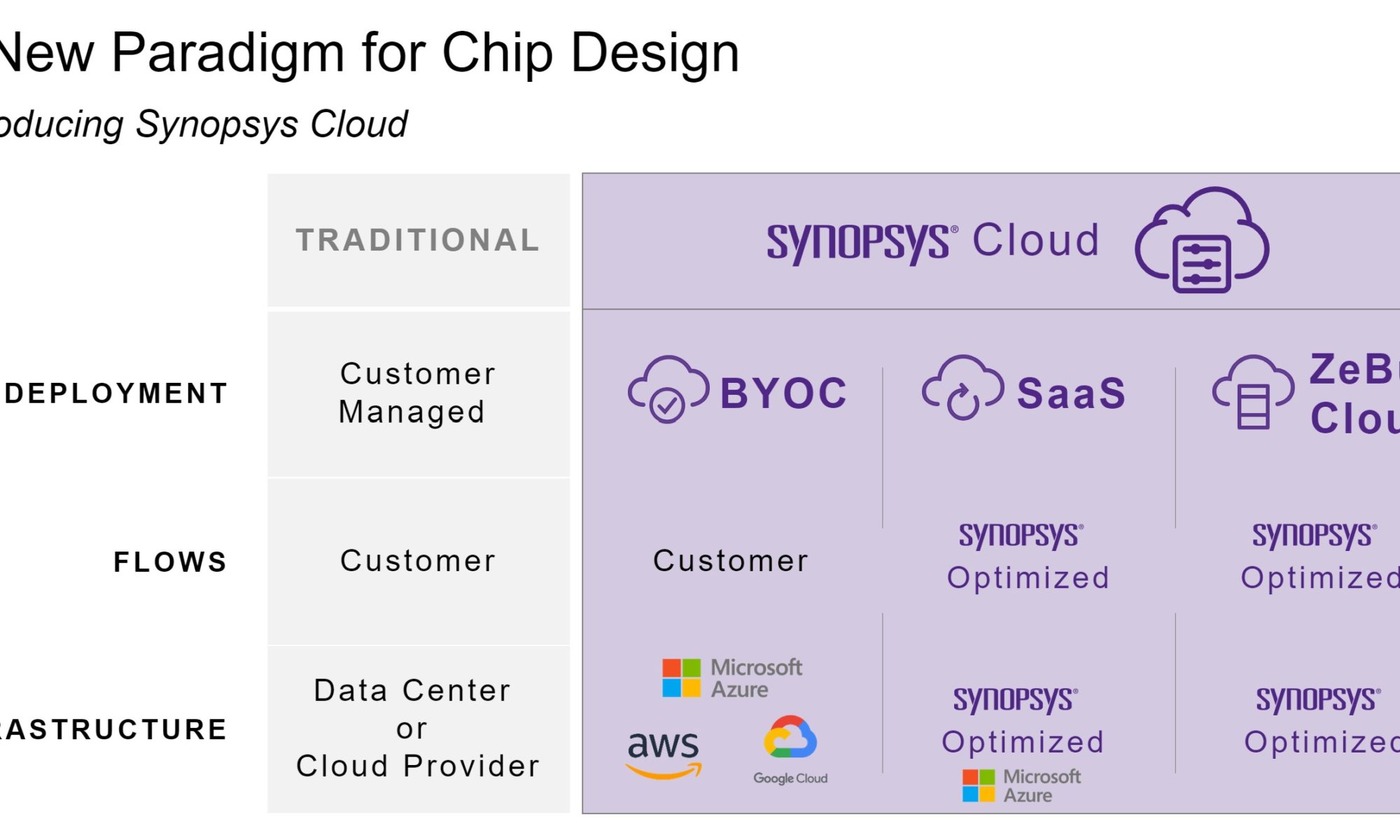There’s been a lot of discussion and hype regarding use of the cloud for chip design for quite a while, more than ten years I would say. I spoke with Synopsys to better understand their recent Synopsys Cloud announcement to determine if it is different. Briefly, it is different, and here is why:

If you’re trying to design a complex SoC, or more like a system-in-package today, you have many hurdles to negotiate regarding the design infrastructure required. Things like:
- Compute power: Has your IT department provisioned enough CPUs, memory and disk (with the required access speed) to support your next huge design project? What about peak load requirements? This is a tough one since it takes a long time to justify, procure and provision this kind of asset.
- EDA tools: This one can be quite tricky as well. Like IT infrastructure, EDA procurement cycles can be long and complicated. You may have a good idea of how many of each kind of license you need for that next huge design. But there will be surprises. You may need more of some tools to meet time to market. There may be a new tool that gets released during the design – a tool that is perfect for this project. If only you knew about it beforehand. Now that the procurement cycle is done, you’re faced with more difficulty to get what you need.
- Building the design flow: Has your CAD department hooked up the required tools in the right flow for each step in the huge project ahead of you? This isn’t the end of it. Besides the actual flow, the tools need to be matched to the right compute environment. Some design steps need a lot of memory. Some need a lot of compute and others need both. Everything seems to need more disk space than you’ll ever have.
And all of this just gets you to the starting line. You still must design that next huge project.
The widespread move to the cloud for chip design has really helped with the first item, above. But the second two are still essentially an exercise for the design team (and CAD team) to address. Whether you’re on the cloud or on premises, configuring machines for the workload at hand and ensuring you had the foresight to buy enough of all the right tools are challenges. Negotiating peak load license capacity can help, but did you ask for enough? And what about new tools that aren’t in your contract?
What’s New?
The second and third items on the list, above, are what sets Synopsys Cloud apart. Two business models are supported – bring your own cloud (BYOC) and a unique software-as-a-service (SaaS) approach to chip design on the cloud.
BYOC is similar to traditional models – you use the cloud vendor of your choice to flatten the compute requirement problem and the EDA vendor provides cloud-certified tools that you can purchase and run there. The SaaS model takes the user experience a step further by providing pre-packaged design flows for all the workflows you’ll need that are optimized and matched to the right compute resources. This is all provided by Synopsys, so you don’t need either an IT or CAD department.
BYOC is just that, pick your favorite cloud provider (Azure, AWS, Google Cloud Platform) and Synopsys will provide cloud-certified tools. The SaaS model is a joint development with Microsoft Azure.
There is more, however. Another innovation that is part of Synopsys Cloud is something called FlexEDA. This one is a game-changer. This is patent pending metering technology that provides access to a growing catalog of EDA tools from Synopsys and use them on a pay-per-use basis by the minute or hour. No pre-determined licensing requirements. Decide what you need and provision it for as long as you need it. This makes EDA deployment just like cloud computing deployment. Ask for whatever you need and pay for what you use. FlexEDA is available for both the BYOC and SaaS model, so lots of options. Synopsys is also working with foundries to simplify access to resources like PDKs. There is no EDA company closer to the foundries that Synopsys.
The FlexEDA model is what we cloud enthusiasts, like myself, have been patiently waiting for and could fundamentally change the EDA landscape, absolutely.
Companies can sign up for Synopsys Cloud immediately.
Also read:
Use Existing High Speed Interfaces for Silicon Test
Getting to Faster Closure through AI/ML, DVCon Keynote
Upcoming Webinar: 3DIC Design from Concept to Silicon
Share this post via:






Comments
2 Replies to “Synopsys Announces FlexEDA for the Cloud!”
You must register or log in to view/post comments.